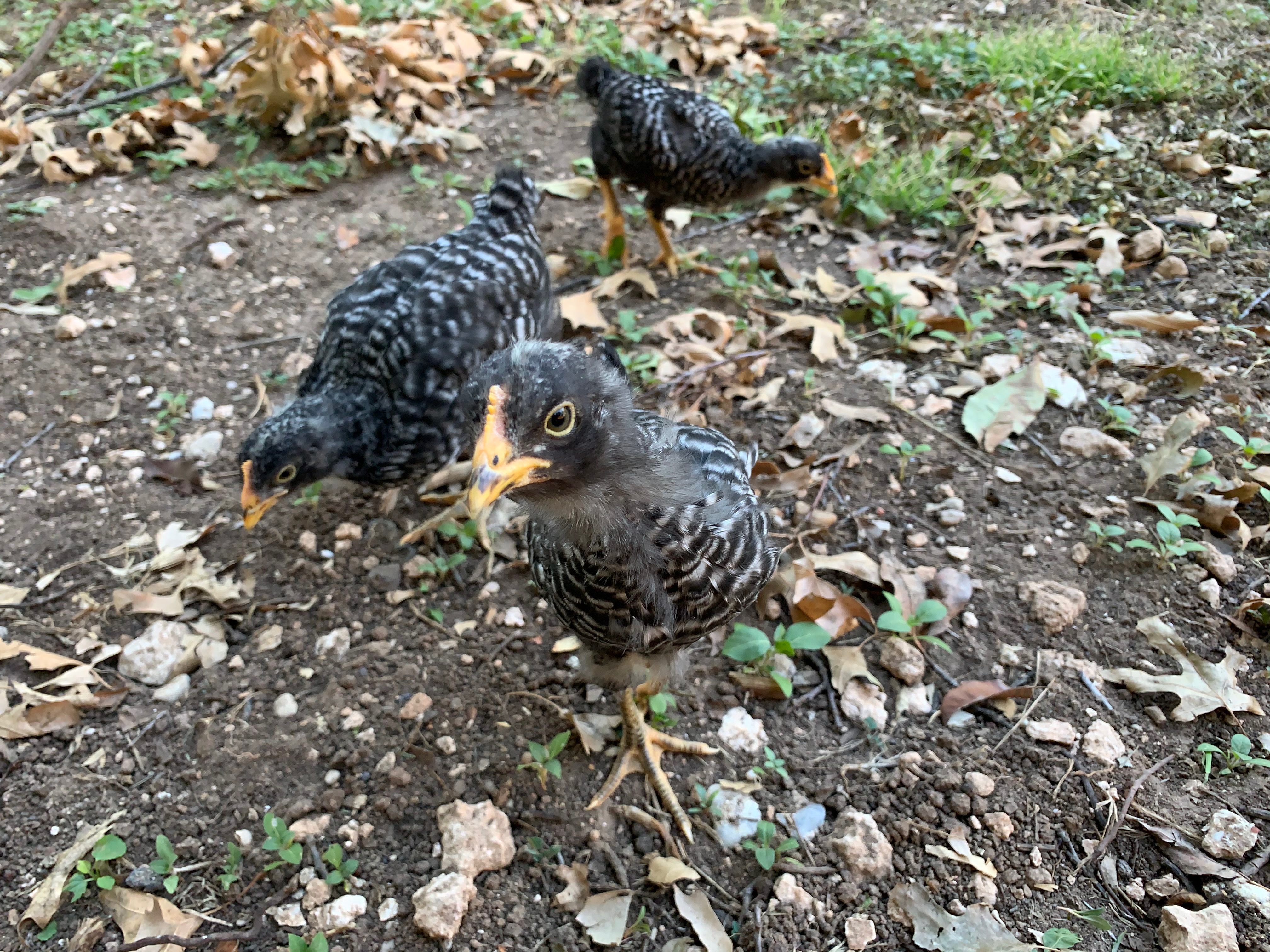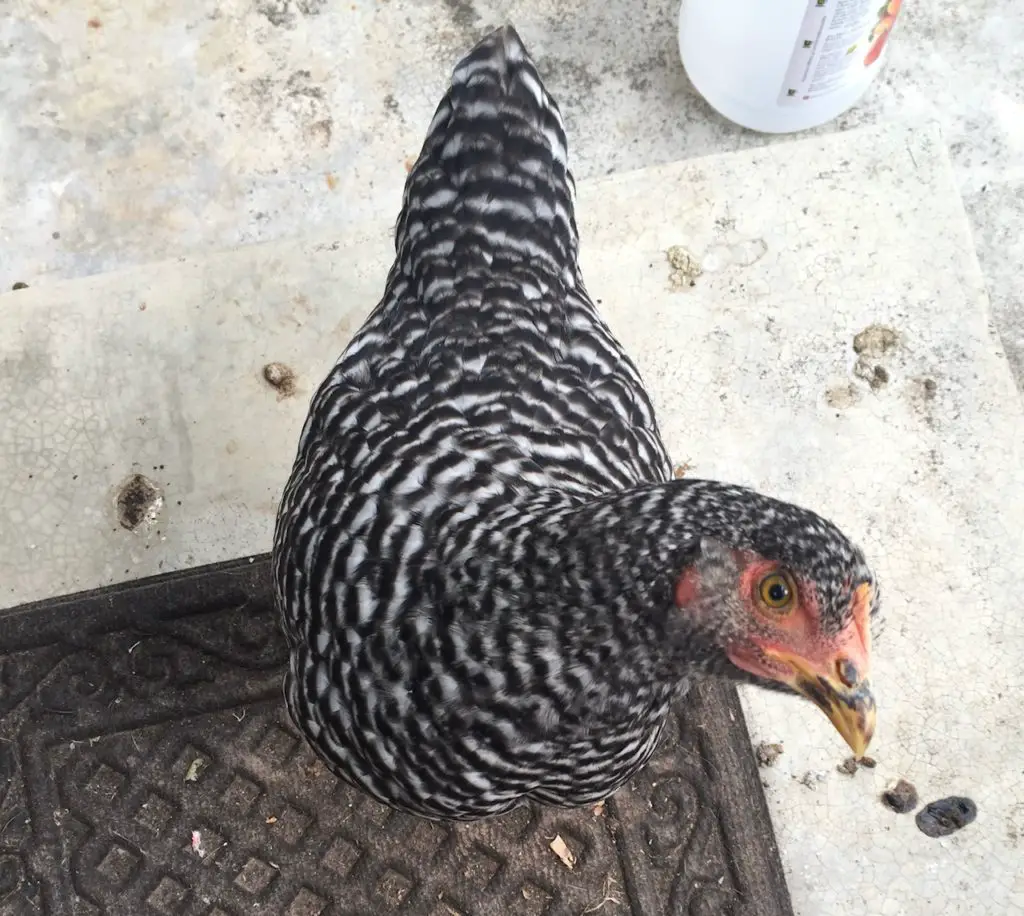A chicken’s comb and wattle are two features that give chickens their “chicken-y” look compared to other birds. These appendages serve a purpose for maintaining a chicken’s health. By knowing what they should look like at each stage of your chicken’s life, you can ensure your chickens are healthy.
A chicken’s comb is the red fleshy appendage at the top of the chicken’s head. A chicken’s wattle is the fleshy appendage that hangs down below their throat. Both of these body parts are used primarily to keep the chicken cool. The color, size, and texture of the comb and wattle can indicate the overall health of the chicken.
Keep reading to learn more about when a healthy chicken will get their comb and wattle and how these two body parts are necessary for a chicken’s good health.
Age that a Chicken Will Get a Comb and Wattle
A chicken’s comb will be visible shortly after they hatch. It will be close to their head and might be a yellow or light brown color.

Over the course of several weeks, the comb will grow larger in size. Young chickens, also called pullets, will have a comb and wattle that might be a light brown to a light pink color.

It will be several weeks after hatching before a defined wattle is evident on chickens.
Around 20 weeks, the comb and wattle will start to turn a more deep red.

The red comb and wattle indicate that a chicken is at, or near, sexual maturity. At this point, hens will begin to lay eggs.
You can estimate the approximate age of a pullet based on the development of their comb and wattle. After they have reached adulthood, it is more difficult to estimate their age based on these features alone.
Characteristics of a Healthy Comb and Wattle
A healthy adult chicken will have a comb and wattle that are brightly colored. Most breeds of chicken will have a red comb, although that can vary depending on breed.
During the molt, which usually happens once a year in the fall, the redness of the comb and wattle might decrease some. During this time, a chicken’s feathers will fall out and be replaced with new feathers. The deep red color of the comb and wattle will come back after all the feather’s have grown back.
In addition, a healthy chicken’s comb and wattle will be very fleshy. This means they are thick and have some wiggle if you were to touch them. Think of your ear lobe as a comparison.
The comb of a young, healthy chicken will be erect and stand upright.
As chicken’s age, the comb can fall over to one side. This can be due to a large comb that has gotten too heavy to stand upright or a loss of collagen in the comb. If a chicken seems otherwise healthy, a comb that is laying over is not a concern.
Purpose of a Chicken’s Comb and Wattle
The chicken’s comb and wattle serve as a radiator to help cool the chicken.
The comb and wattle contain a network of capillaries which circulate blood continually. The reason the comb and wattle are a deep red color is because of these capillaries.
This circulation of blood helps to regulate the chicken’s overall body temperature. Heat is able to dissipate through these appendages to keep the chicken cooler.
The comb and wattle are the second most efficient way that chickens are able to tolerate heat. The number one way chickens are able to cool off their bodies is through panting.
Check out this post to learn more about how chickens are naturally able to cool themselves during hot weather.
During the winter, the comb in particular is subject to frostbite. This is because chickens will sleep with their heads tucked under a wing and if the comb is not fully covered by the wing it can get frostbite.
Petroleum jelly can be added to the comb during winter to help prevent frostbite. It can also treat frostbite if it has already occurred.
Comb and Wattle Differences Between Roosters and Hens
Both roosters (male chickens) and hens (female chickens) have combs and wattles.
A rooster’s comb will be significantly larger than a hen’s. This feature can help to determine the sex of your chickens at a young age.
In addition to serving as a way to regulate a chicken’s temperature, a secondary purpose of the comb is to help a chicken attract a mate.
A rooster‘s comb serves as a sexual attractant by hens. Studies have shown that hens are attracted to roosters with a larger comb as opposed to a rooster with a smaller comb. This could be due to roosters with a large comb have higher testosterone levels and hens wanting their offspring to possess the more healthy traits of an alpha rooster.
In some flocks without a rooster, a dominant hen can end up growing a large comb and wattle to fill this gap. She can also serve as the protector of the flock since there is no rooster.
Comb and Wattle Differences Between Breeds of Chickens
Different breeds of chickens will possess different looking combs and wattles.
Combs and wattles can vary in size, shape, and color depending on the breed of the chicken.
Shapes of combs include single (the most common type of comb), pea, V-shaped, and rose.
Certain breeds of chickens, like Leghorns, Minorcas, and Anconas, have extra large combs. These large combs allow them to tolerate heat much better than breeds will small or pea combs. Large combs are more prone to frostbite or injury so watch out for this if you have any of these breeds of chickens.
Breeds of chickens that have small combs or small wattles will have a difficult time handling heat and should be raised in cooler climates. Examples of these breeds of chickens include Ameraucana and Brahma.
A pea shaped comb is much less efficient at keeping a chicken cool compared to a large single comb. However, a small comb and small wattle are perfect for chickens raised in colder climates because their small size makes them less at risk of developing frost bite.
A chicken’s comb and wattle are the distinct features that most people think of when they picture a chicken. These appendages regulate a chicken’s temperature and also signify their overall health. By knowing what they should look like at each stage of your chicken’s life, you can ensure your chickens are healthy.

